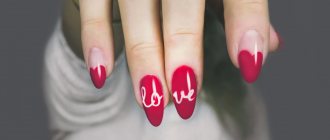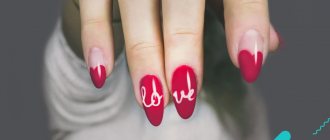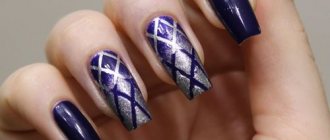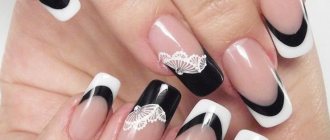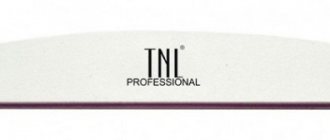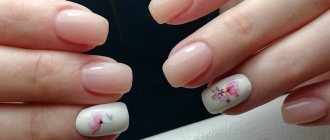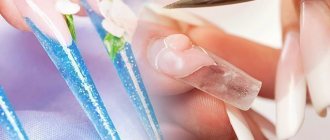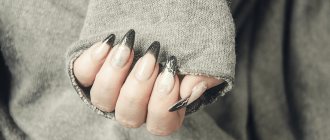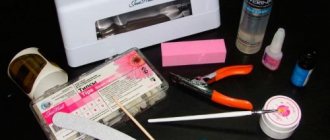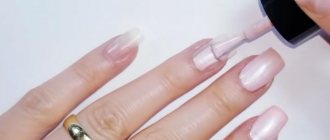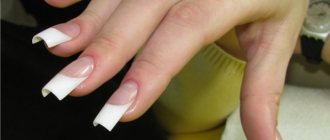Every girl wants to be irresistible. To make your look complete and stylish, even little things like nails can play an important role. Beautiful and well-groomed nails make a woman sexy and attractive. But, unfortunately, not everyone has been blessed with such beauty by nature.
How nail extensions are done - practicing nail artists, on the instructions of the COLADY editors, tell us step-by-step extension technology.
Pexels Photos
Nail extension is a simple procedure that will help make your hands neater and your image complete. Before deciding on the procedure, read interesting reviews and watch useful video tutorials about nail extensions.
Cons of nail extensions
- Quite a high cost of the nail extension procedure;
- When preparing the nail, it will be exposed to mechanical devices, damaging it;
- If you come across an unscrupulous master, deformation of the nail may occur;
- You may develop an allergy to the components that make up the extension materials;
- If the extended nail breaks, it breaks in the middle of the nail plate, which is very painful and does not lead to anything good.
- Extended nails require correction, so you will have to find time and money to visit the salon;
- Natural nails become thinner after removing extensions. You will have to spend a lot of effort to get your natural nails in order.
- Gel nails cannot be removed, they will have to be filed off. Only a master can perform such a procedure.
Can UV lamps be dangerous?
There is no evidence that short-term drying of the gel in a UV lamp can cause any harm to the body. In theory, regular exposure to UV lamps could have the same effects as tanning (i.e. skin aging and risk of skin cancer), but recent studies published in competent scientific sources indicate that the risk is negligible. This means that you risk more when you visit a solarium or sunbathe on the beach under the scorching rays of the sun than when you use an ultraviolet / LED lamp for 1-2 minutes.
To have 100% confidence that you are not putting yourself in danger when drying the gel in a lamp, we recommend that you use creams with a high sun protection factor or use protective gloves.
Which lamp is better - LED or ultraviolet?
The LED lamp is faster - it usually takes 60 seconds to cure the varnish, while in the UV lamp this process takes about 180 seconds.
We can conclude: due to the fact that the gel does not contain substances that react with the skin, it is considered relatively safe for health. If you follow all the rules for gel nail extensions, then this coating does not harm the natural nail and can be used to strengthen, protect and stimulate nail growth.
Despite the fact that a properly performed gel manicure does not have any negative effects on the body, there are some contraindications to its use. Namely, it is not suitable for people taking strong medications, including antibiotics, hormonal agents or drugs used during chemotherapy, since in this case the gel is perceived by the body as a foreign body and therefore will not adhere well to the nails. Contraindications also include any damage to the cuticle and nail plate, allergies to gel components and fungal diseases - nail mycosis.
As you can see, the myth that gel manicure severely damages nails has been successfully debunked. Therefore, hurry up to order gel for nail extensions inexpensively and bring to life original designs that make your nails beautiful and original.
Gel and acrylic nail extensions - comparison
At the moment, there are 2 main materials for nail extensions - acrylic and gel.
- Acrylic is a special powder that is mixed with a special liquid. The result is a thick and sticky substance that is applied to the nail. A professional can properly extend acrylic nails, since the acrylic mixture quickly hardens in air. But, with certain skills, acrylic nail extensions can be done at home. After applying the mixture to the nail, it is trimmed, polished and coated. Acrylic nails are very durable, but if you still manage to break them, a specialist in the salon can easily repair the damage. Acrylic nails are easy to remove : using a special product, acrylic is dissolved and removed. The only drawback of acrylic nails is the specific smell of the material, which will accompany you for some time. But then the smell will disappear.
- Gel is also a good material for nail extensions. Thanks to the gel, nails are not only strong, but also elastic. The gel allows the nails to breathe and allows moisture to pass through, which is good for the nails. Gel nails harden under the influence of ultraviolet rays, which will not allow fungus to develop on the nail plate in the future. To make the nail stronger, the procedure is repeated several times. When the last layer of gel has hardened, the nail can be given the desired shape and coated with varnish. Gel nails can be done in a salon by an experienced nail technician, but gel nail extensions can be easily done at home if you purchase everything you need for the procedure and study the instructions. The advantages of gel nails include durability (service life can reach up to 5 months). Among the disadvantages are the following: if a nail breaks, it cannot be restored ; you will have to make a new one. Getting rid of gel nails is also difficult. Frozen gel can only be removed by a master by filing .
To be honest, gel and acrylic belong to the same group of “acrylates”, so it’s impossible to say for sure which is better. Each person chooses the most optimal extension option and follows it. At the moment, there is a special technology that allows you to combine acrylic and gel: first acrylic is applied to the nail, which makes the nail stronger, then gel is applied to add shine.
Lack of clear boundaries
Actually this one is like that. Even those women who regularly visit salons do not fully understand what the difference is between these materials. But it lies not only in the properties, but also in the application technology itself, which is more important for the master than for the client himself. The formation of an artificial nail begins with filing of the native nail plate. Then one or another material is applied to it. Acrylic hardens very quickly, which makes it difficult to work with, especially for beginners. Gel, on the contrary, has a fluid structure and takes its final form only under a special lamp. But this also has its downsides. If you leave a jar of gel in the sun, then the time required for one client will be quite enough for it to become completely unusable.
All methods of nail extension - with tips, with paper forms, with top forms, with liquid tips
There are several types of nail extensions. Each type is different from each other and has its own advantages and disadvantages.
Nail extension with tips
Tips are plastic plates that are attached at one end to the nail before applying gel or acrylic. After applying the material, the extended nails are covered with varnish and a design is applied. The color and size of tips can be very diverse.
There are liquid tips (reusable forms with which an artificial nail is made. This method does not use disposable forms or tips).
An important advantage of liquid tips is the non-use of glue. Glue is the most toxic substance used for any nail extension. Using liquid tips you can:
- Create reusable forms, which significantly saves the budget;
- Create the perfect arched jacket;
- Create unique and complex designs;
- Possibility of creating a pedicure.
Properly selected tips can only use a small part of the nail, which protects your nails. After fixing the tips, the nails can be given any shape or length. Here everything depends only on the imagination and skill of the master.
Form nail extensions
Forms are disposable paper bases, the outer side of which is coated with a special compound, and the inner side is coated with an adhesive component. Paper forms are thrown away after use. There are reusable forms made of metal. These forms are attached to the nail using a metal clip. For subsequent use, the metal mold must be disinfected.
What it is?
Hair extensions allow you to grow your hair to the desired length in the shortest possible time and make it somewhat more voluminous. In other words, this is the fastening of artificial or donated hair by someone, that is, donor hair.
The strands are fixed, as a rule, in the root zone, but this work can be done in different ways. Some methods are so simple that extensions can be done even at home and without the help of specialists. However, the work should be repeated about once every two to three months, as the roots grow back, and the hair extensions themselves should be fixed somewhat closer to the roots.
How to care for extended nails
Many people believe that it is not necessary to take care of your nails after extensions. But that's not true! Any material does not last forever and requires special care, especially since natural nails tend to grow. There is no way to do this without correction of extended nails.
To make your nails look beautiful and not break, it is important to follow some rules:
- Neither gel nor acrylic nails tolerate acetone. Therefore, choose nail polish remover without acetone, use non-aggressive household chemicals;
- Do not use wire cutters or scissors. A polisher and file for extended nails will help you adjust the length of your nails;
- Do not hit your nails on a hard surface, do not drop heavy objects on them and be careful;
- Take care of your cuticles. To prevent hangnails from forming and to keep the cuticle moisturized, moisturize it with vegetable oils. If your cuticle grows too quickly, use a special product to slow down its growth;
- Before a manicure, do not take baths, use only softening oils. This will help prevent damage to your nails;
- If you dive into a cold pool after a hot bath, you can damage your nails;
- When painting your nail extensions with varnish, use only high-quality varnishes. Pay attention to the consistency and shelf life of the varnish;
- It is recommended to go for correction at least once every 3 weeks;
- Do not resort to hardware manicure services. It contributes to weakening and brittleness of nails;
- Don't try to fix a broken nail yourself;
- It is recommended to remove extended nails only in salons;
- Do not cover your extended nails with a thick layer of varnish.
These are the basic rules for caring for extended nails, following which you will preserve their beauty and durability.
